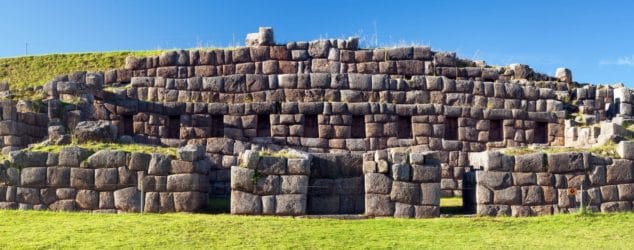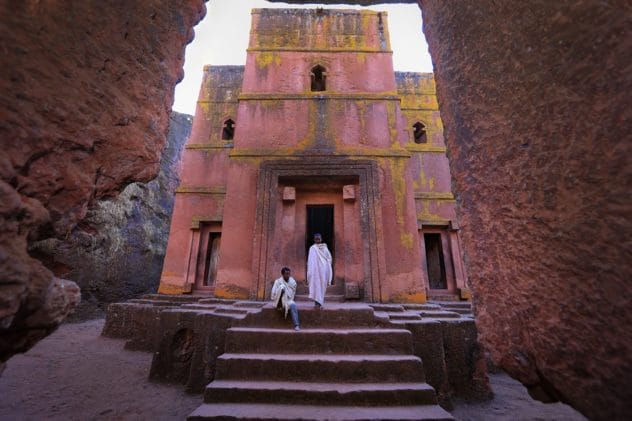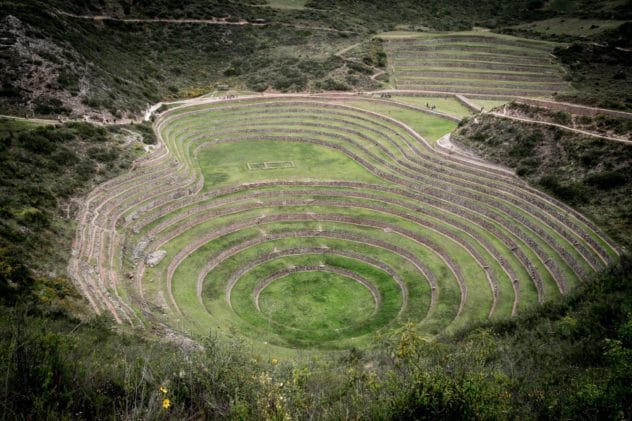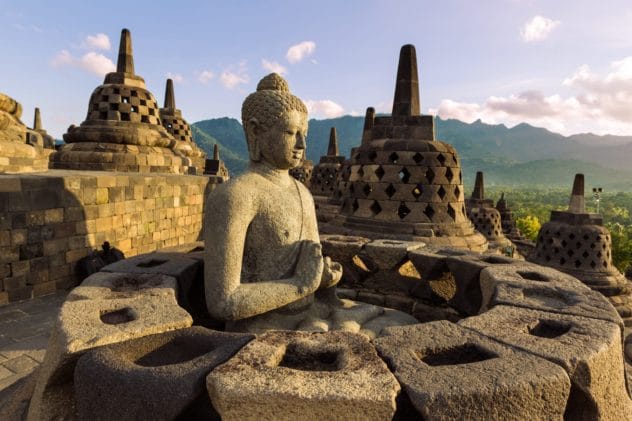Human beings have always been driven to create impressive structures. Modern architects and engineers design cutting-edge buildings with the aid of advanced technology. But what about the monolithic and precise structures built in ancient times, without the luxuries of modern equipment? Let’s explore ten ancient structures that continue to baffle us.
The Nan Madol
Nan Madol, an abandoned megalithic city, showcases incredible architecture that challenges our assumptions about what was possible in ancient times. Located on a lagoon near Pohnpei, it features around 100 artificial islets spread across 150 acres. This city could house over 1,000 people and is believed to have been a ceremonial and political center for the Sau Deleur dynasty chiefs (c.1100-1628).
What makes Nan Madol truly puzzling is that its builders used only the weight and positioning of stone columns, without mortar, to secure the buildings. Oral histories tell of gigantic birds moving the basalt columns into place. While the exact building techniques remain a mystery, it is clear that a vast economic and ecological system was needed to support this endeavor.
Puma Punku
Puma Punku, part of a temple complex in the Andes Mountains of Bolivia, is another site that raises many questions. Historians estimate it was built between 536-600 AD, though some scientists believe it is much older. The stones are massive, with the largest weighing about 131 tons, twice the capacity of modern earth-moving equipment. How the people of that time managed to move these stones remains unknown.
Located at an altitude of 12,800 feet, Puma Punku is above the natural tree line, meaning wooden rollers couldn’t have been used to move the stones. The precisely cut shapes and magnetic properties of the stones further deepen the mystery, suggesting our ancestors were more advanced than we often assume.
Monoliths of Asuka
The village of Asuka in Japan, dating back to the Kofun Jidai period (250-552 AD), contains twenty famous stone structures of unknown origin. The most unusual is the Masuda-no-Inafune, or ‘the rock ship of Masuda,’ which measures 11 meters long, 8 meters wide, and almost 5 meters high, weighing approximately 800 tons.
The purpose and creators of these structures remain a mystery. Some speculate Buddhists carved the stone for ceremonial or religious purposes, as the region has many Buddhist shrines and temples. However, the structure doesn’t exhibit any typical Buddhist architectural styles.
Mysterious ‘Alien’ Black Boxes
Archeologists discovered twenty-four coffin-shaped black boxes in a hillside cave at Saqqara, near the pyramid of Djoser. These boxes are made of solid Aswan granite, incredibly hard to scratch even with modern equipment. The engineering tolerance of these airtight boxes is remarkable, each weighing well over a hundred tons.
The precision of the stone cutting makes it difficult to believe Egyptians made them, leading some to speculate they were created by aliens. The existence and purpose of these mysterious boxes remain unexplained.
The Walls of Sacsayhuaman

Sacsayhuaman, located on the northern outskirts of Cusco, is one of the world’s most stunning Inca ruins. The Incas built this former capital of their dynasty like a fortress. The most prominent feature is an outstanding wall made of super-heavy rock boulders that fit together like a jigsaw puzzle.
The boulders are irregularly shaped but so tightly spaced that it’s impossible to fit even a needlepoint between them. The walls rise to over 6 meters, with the longest stretching 400 meters. The walls are so impressive that the Spanish, upon taking over Cusco, believed only demons could have built them and attempted to tear them down. How the Incas shaped and fitted these boulders together perfectly remains a puzzle.
Lalibela’s Rock-Hewn Churches

Lalibela’s eleven ancient rock-hewn churches highlight Christianity’s long history in Ethiopia. Carved as monolithic structures, they reach depths of 40 to 50 feet below the earth’s surface. Cross-shaped openings serve as windows, ventilation, and drainage.
One popular theory suggests King Lalibela of Ethiopia ordered their construction in the 12th century. Local worshipers believe King Lalibela, with the aid of angels, completed the eleven churches in a single night. The exact methods and reasons behind their creation continue to inspire debate.
Longyou Caves
Located in Shiyan Beicun, Zhejiang, China, the Longyou Caves were discovered after locals drained a pond, revealing hand-dug caverns. To date, archeologists have found 35 similar caverns carved from siltstone, descending almost 30 meters below ground level.
The construction of these caverns remains a mystery. It would have taken 1,000 skilled artisans working around the clock for years to complete this project. The whereabouts of the 1 million cubic meters of stone removed from the caves are also unknown.
The Moray Terraces of The Incas

Moray, located northwest of Cusco, Peru, features ancient amphitheater-like structures with concentric terraces. The biggest terraces descend approximately 150 meters to a circular bottom.
The bottom is well-drained, preventing rainwater accumulation. A vast temperature difference of up to 15°C exists between the top and bottom, creating micro-climates. This suggests the Inca terraces were used for agricultural research, studying the impact of different climatic conditions on crops.
The Treasury at Petra

Historians believe The Treasury at Petra was built in the 1st century BC. Its design has no precedent in the region, suggesting it was the work of Hellenistic architects from the near east. The exact purpose of The Treasury remains unknown.
The structure got its name from the Bedouin belief that its giant stone urn hid pirates’ ancient treasures, leading them to fire at it in hopes of releasing the treasure. Bullet holes are still visible on its walls.
While its creators and purpose remain a mystery, its aesthetic beauty is undeniable. The building’s layout features one large central chamber and two smaller ones flanking the porch. Built high on a cliff, it has several small rooms and tombs below.
The Borobudur Temple

The Borobudur Temple, the world’s biggest Buddhist temple, continues to raise questions about its construction. Historians estimate the Shailendra dynasty built it in the 8th century, taking a century to complete. Archeologists suggest its initial design was a giant stupa built around five balustrades, later altered to feature three stupa levels around one great stupa to prevent collapse. Its design resembles a Mandala, hinting that Indian Buddhists constructed it.
Over 504 statues adorn the temple, and the central dome has 72 stupas, each containing a statue. The main stupa contains an unfinished Buddha sculpture, adding to the temple’s mystique.
Conclusion
While the exact construction methods of these ancient structures might remain a mystery, we can still study and marvel at these enduring achievements. They show the ingenuity and skill of past civilizations, challenging our perceptions of what was possible.
Which of these ancient structures fascinates you the most? Leave your comment below and share your thoughts!










